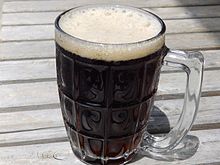**1. History and Origins:**
– Root beer has been consumed in the U.S. since the 18th century.
– It was sold in confectionery stores starting in the 1840s.
– Written recipes have been documented since the 1830s.
– The commercial production of root beer began in the 19th century.
– Root beer originated in North America, with Native Americans and early European settlers making root-based beverages.
– The drink gained popularity during Prohibition.
**2. Ingredients and Traditional Method:**
– Traditional root beer ingredients include sassafras, sarsaparilla, and wintergreen.
– Common flavorings include vanilla, caramel, and licorice.
– Modern root beer ingredients typically include filtered water, sugar, and sassafras extract.
– Some recipes contain caffeine, while others are caffeine-free.
– The traditional method involves cooking molasses syrup with root ingredients and adding yeast for fermentation.
– The fermentation process creates carbonation in traditional recipes.
**3. Foam and Flavor Variations:**
– Sassafras root and bark historically created natural foam in root beer.
– Carbonated water replaced fermentation for carbonation.
– Some brands use starch and surfactants to enhance foam.
– Common flavors like vanilla, caramel, and licorice are used worldwide.
– Distinctive foaming behaviors have been used in marketing root beer products.
**4. Regional Production and Commercial Impact:**
– Root beer is produced in Canada and all U.S. states, with some brands also produced in other countries.
– Major root beer brands are caffeine-free, except for Barq’s.
– Root beer is often associated with American nostalgia and is a popular non-alcoholic beverage in the United States.
– Major beverage companies produce root beer alongside other sodas.
– Craft breweries have started making artisanal root beer, and hard root beer with alcohol content has gained popularity.
**5. Health Considerations and DIY Options:**
– Traditional root beer had potential health benefits from herbal ingredients.
– Modern root beers may contain high sugar levels.
– Some root beer recipes can be made at home, with DIY root beer kits available for home brewing.
– Consumers should be cautious about the sugar content in commercial root beers.
– Root beer floats are a classic dessert combining root beer and ice cream, and the drink has inspired various products like candies and syrups.
Root beer is a sweet North American soft drink traditionally made using the root bark of the sassafras tree Sassafras albidum or the vine of Smilax ornata (known as sarsaparilla, also used to make a soft drink, sarsaparilla) as the primary flavor. Root beer is typically, but not exclusively, non-alcoholic, caffeine-free, sweet, and carbonated. Like cola, it usually has a thick and foamy head. A common use is to add vanilla ice cream to make a root beer float.
 Freshly poured root beer in a glass mug | |
| Type | Soft drink |
|---|---|
| Region of origin | North America |
| Introduced | c. 18th century |
| Color | Caramel (dark) |
Since safrole, a key component of sassafras, was banned by the U.S. Food and Drug Administration in 1960 due to its carcinogenicity, most commercial root beers have been flavored using artificial sassafras flavoring, but a few (e.g. Hansen's) use a safrole-free sassafras extract.
Major root beer producers include PepsiCo, Coca-Cola Company, Dad's, Keurig Dr. Pepper, and A&W.
